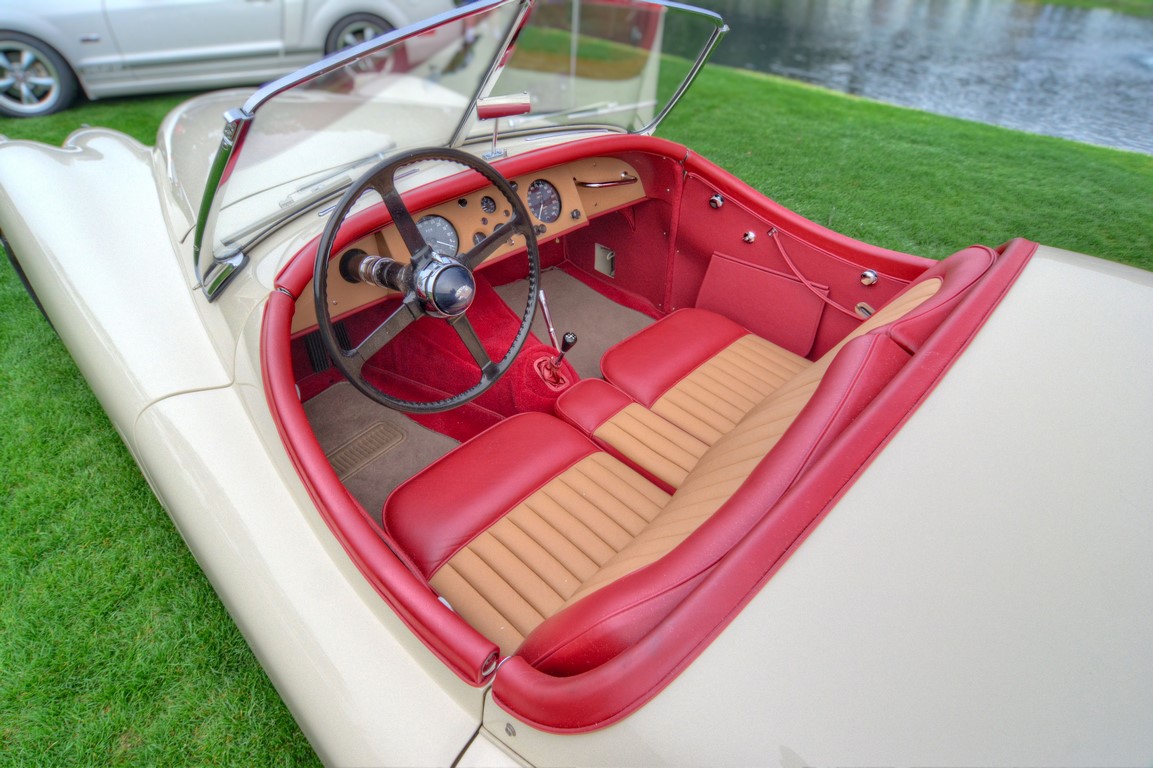
Comfort beauty, performance, class – the Jaguar XK120 was a legend in its own time.
The Original XK120 was a true roadster, with a fully detachable top stored in the trunk. The hardtop coupe version was introduced in 1951 and a convertible in 1953. Eventually 30,000 XK120’s were produced in all versions.
If soon became clear that the XK120 was not only a beautiful machine but a formidable racing competitor. At its racing debut in August, 1949 it took the two first places at Silverstone. With Sterling Moss at the wheel and XK120 won the Tourist Trophy at Dundrod and the Silverstone in 1950. The twin-overhead-cam, 6-cylinder has a displacement of 3.4 Liters, producing 160 hp, with a 4 speed transmission and a top speed of 120 mph.
This Roadster recently completed a frame off restoration by Tsikuris Classics in Lakeland, Fl.
You may purchase a print in our dElegance 2016 online gallery.



